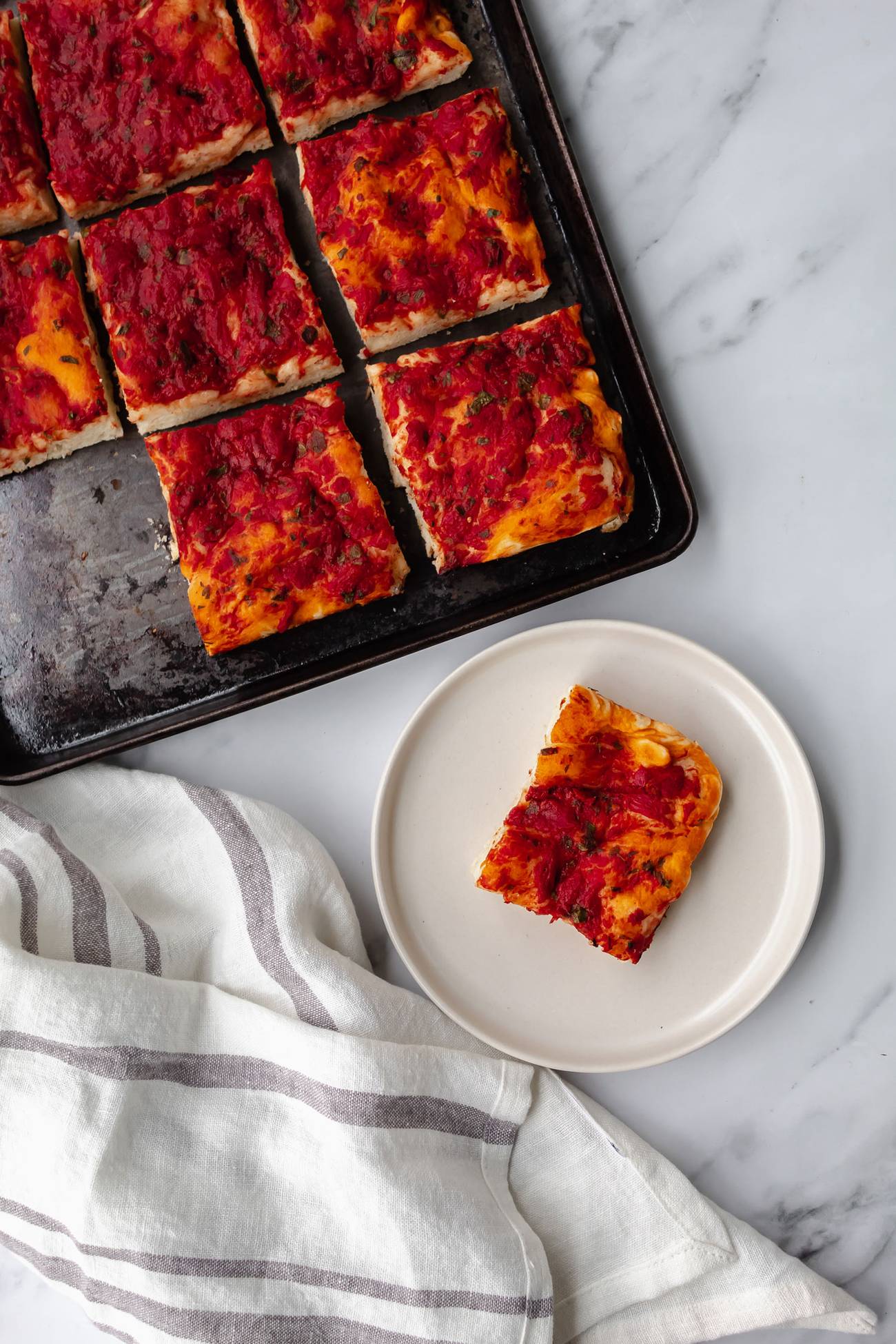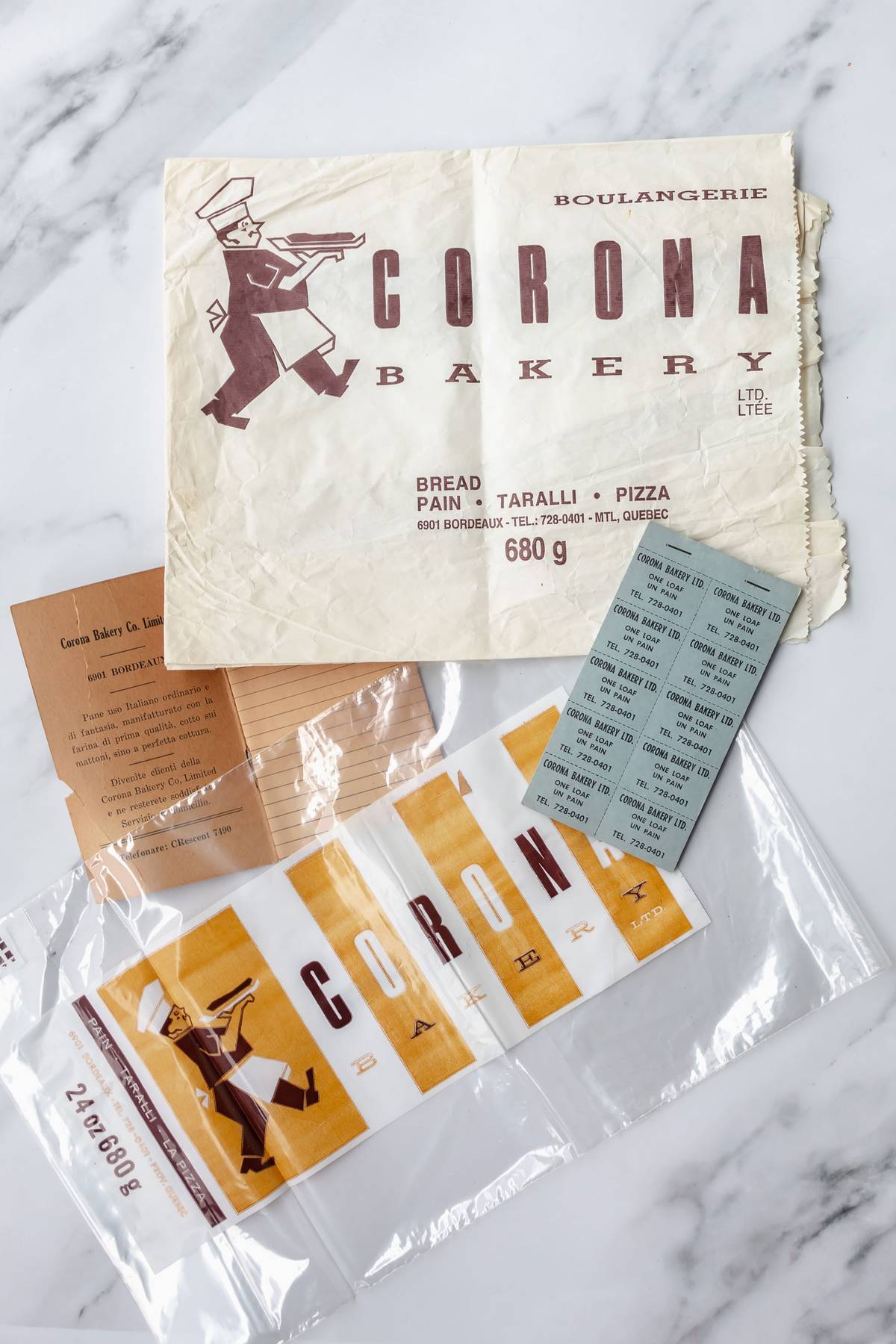The Pizza I Couldn’t Leave Behind When I Converted to Judaism
Tweaking my great-grandfather’s recipe allowed me to create a Jewish identity that honors my Italian heritage




I grew up in the Montreal neighborhood of Petite-Patrie, where my parents and I shared a duplex—one of those quintessential Montreal buildings—with my maternal grandparents. Our home was one of the six that my great-grandfather Donato Monaco built for his children on this street, and it sat side-by-side with the bakery he and his brothers Vincenzo and Antonio opened in 1932, in a part of town where many Italian immigrants settled in the early 1900s.
The bakery was called Corona, meaning “crown” in Italian. They sold pizza, bread, and taralli to members of the local Italian community, and delivered their products around the city by horse and buggy. It was a small business, with family members pitching in to help run it.
The bakery was at the center of my family’s life for many years. I was told stories about the weekly Sunday lunches of pasta that my family hosted in their home above the bakery once they had closed for the day, and the time my great-grandfather was unjustly interned for six months during WWII and running the bakery fell to my grandmother and her then-future husband. My grandmother served customers and my grandfather baked pizza and bread in the large wood-fired ovens that were located behind the storefront. The bakery holds memories, both dear and difficult, that have become part of who I am.
I grew up seeing my great-aunts and uncles on a daily basis, and because we lived so close to one another, we often crossed the street into each other’s homes for impromptu dinners, birthday parties, holiday celebrations, and many other gatherings. Accompanied by my mom, I would often duck behind the bakery counter to see my grandfather, a place few got to see, with its wooden floors always covered in a fine layer of flour. It was a unique upbringing that gave me a taste of times when families lived in close proximity to one another rather than being spread across cities or countries.
Living so close to the bakery also meant we were never without a loaf of bread or slab of pizza; these things were ever present in my kitchen growing up, as well as at family get-togethers. This included the long zoulou bread with its rounded ends and raised lip down its center, small paninis for sandwiches, and rosemary and oil pizza. But without a doubt, the pizza Napoletana was the family favorite. This was a rectangular pizza made with a yeasted dough that was enriched with lard and topped with a mixture of crushed tomatoes, finely chopped parsley, and finely grated parmesan cheese. It was baked in an oiled sheet pan at very high heat, so that the bottom was golden brown, and there were blistered spots on top of the pizza and crispy corners.
One of my fondest memories of this pizza was getting to eat it for breakfast on Christmas mornings when I was a young girl. I would wake up more excited to eat than I was to open the gifts that “Santa” had left me; I knew this was the one day a year when I had something more exciting ahead of me than cereal or eggs. Sitting at my parents’ round wooden kitchen table, while it was still dark outside, eating warm pizza Napoletana was pure happiness and contentment for me.
The bakery closed its doors in 1995 when there was no one in the family to continue running it, and the pizza recipe wasn’t written down. We went to other bakeries to buy similar pizzas, hoping to find one that tasted like what we remembered from the bakery, but nothing tasted quite as good.
I’ve always loved eating, but my interest in cooking and food history is something I developed in my 20s, at the same time that I decided I wanted to convert from Roman Catholicism to Judaism. My interest in studying Jewish food academically is what led me to realize that I felt at home in the Jewish community.
As I moved forward with my conversion, I also trained as a Jewish food historian, completing an M.A., and co-founding The Wandering Chew as a way to share all that I had learned about Jewish food and culture with people. It was in the lead-up to hosting an Italian Jewish dinner that I decided I wanted to add my own Italian Jewish story to the menu. I wanted to recreate the pizza Napoletana I had grown up eating, and bring it forward with me as a representation of my new identity, without leaving all that I had grown up with behind—to bring my Italian and Jewish identities together in one dish.

First, however, I had to change the family recipe.
The original recipe my mom and grandmother remembered the pizza being made with contained lard—rendered pork fat—and I wanted to find a way to make the dish so it adhered to the laws of kashrut. There are other animal fats that are kosher, like schmaltz, but even using that was out of the question, because it would require mixing meat and dairy, once the cheese was added. Besides, schmaltz has a distinct taste, where lard doesn’t. I needed a pareve fat to create a soft dough and crispy crust without any notable taste.
I tried making the dough with Crisco because, as a pareve vegetable shortening, it can be used in dairy dishes. Although this ingredient has been used in many Jewish kitchens and the pizza turned out well, it’s unhealthy, and I decided to keep looking for another option; I ended up with a block of Crisco that I didn’t use for anything else.
Next I tried olive oil. Not only did it create the soft dough I remembered, but it has an important place in both Italian and Jewish cuisines. An ingredient Italian cooks, myself included, will always have in their kitchen, it has also been an important ingredient in the Sephardic kitchen. In fact, it was so important in the Sephardic kitchen that during the Inquisition, olive oil was an ingredient used to prove that hidden Jews were secretly still practicing Judaism and keeping kosher, rather than using lard, as their non-Jewish neighbors were. Using olive oil not only connects me to my Italian heritage but also to a long history in the Jewish community, and reclaims an ingredient that was once weaponized against Jews.
Although it’s hard to recreate the pizza baked in a wood-burning oven that was used to make thousands and thousands of pizzas, I think I’ve created something that brings us close to the pizza that has meant so much to me and generations of my family.
Food was central to myself and my family as I was growing up, as it still very much is for me now, and being able to bridge my identities with this pizza feels important. It will give me the opportunity to pass on the story of my family’s bakery to my young son as he grows up, while also showing him how to celebrate our family’s multiple identities and stories.
Kat Romanow is a food historian, cook, and writer. She is based in Montreal and you can follow her at @wanderingchew.